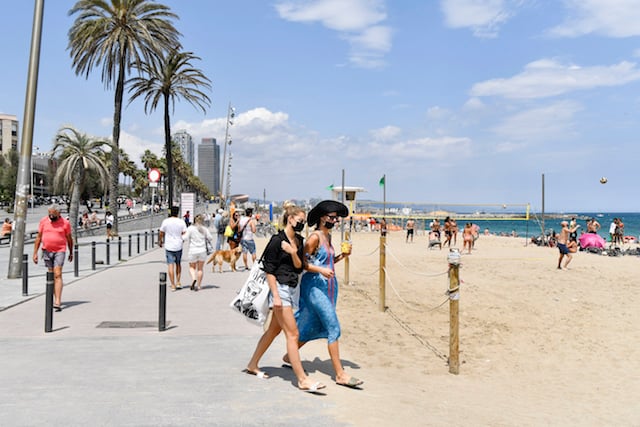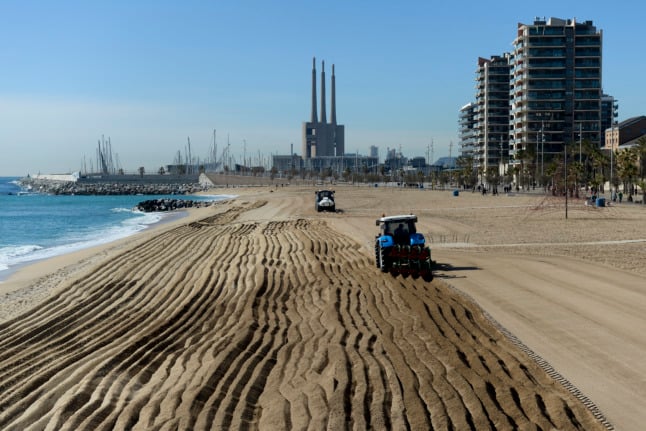Ahead of the verdict, which is expected as soon as Monday, the tension was palpable with police sending in reinforcements to Catalonia where separatists pledged a mass show of civil disobedience, calling for rallies, roadblocks and a general strike.
The government is hoping the long-awaited ruling will allow it to turn the page on the crisis and resume dialogue with this wealthy northeastern region where support for independence has been gaining momentum over the past decade.
But the separatist movement is hoping for just the opposite: that the anticipated guilty verdicts will unite their divided ranks and bring people onto the streets in support of their cause.
On the evening of the day when the ruling is published, activists from the Catalan National Assembly (ANC) and Omnium Cultural, the two biggest grassroots pro-independence groups, have called for rallies across the region.
Then demonstrators in five towns will begin a march to Barcelona where they will arrive on Friday, when a general strike has been called.
And the Committees for the Defence of the Republic (CDR), a group known for its radical activism, on Friday promised to stage several “surprises”.
Anti-riot police have already been discreetly deployed to Catalonia, but the interior ministry has refused to give numbers.
The tension is worrying the main Catalan business lobby group which warned Thursday that though the sentence would have a “significant emotional impact”, it was important the response avoided disrupting “the normal course of business activity or social cohesion”.
For many, the situation has brought back memories of the runup to the October 1st 2017 referendum which was marred by police violence, and of tensions in the street ahead of the short-lived independence declaration of October 27th.
The 12 defendants, most of them members of the former Catalan government, are facing long prison terms for their role in Spain's biggest political crisis since Francisco Franco died in 1975, ending decades of dictatorship.
Following a high-profile trial, which lasted four months and was closely watched both at home and abroad, judges at Spain's highest court will announce their decision in a statement.
The two main charges at issue are those of rebellion and sedition.
Of the two, rebellion carries a far heavier sentence for implying the use of violence, an allegation strongly denied by the defence.
By definition, it is “rising up in a violent and public manner” to, among other things, “declare independence for part of the (Spanish) territory”.
Sedition, however, is “rising up publicly and in turbulent fashion” to “prevent by force or in an illegal way” the law from being applied, or the application of an administrative or legal decision.
In the absence of former Catalan president Carles Puigdemont, who fled to Belgium to avoid prosecution, his former deputy Oriol Junqueras was the main defendant.
If convicted of rebellion, he could face up to 25 years behind bars.
With just a month left until Spain heads to the polls for its fourth election in as many years, the sentence has put the Catalan question once more at the centre of the political debate.
Speaking in Barcelona on Wednesday, Prime Minister Pedro Sanchez said it was time “to rebuild the coexistence that was so necessary in Catalonia” while denouncing the “failed political programme of the pro-independence movement.. that was based on a big lie”.
When the Socialist leader took power in June 2018, he tried to open dialogue with the separatists which fell apart when the trial began in February.
With the case now nearing its end, Sanchez's government is hoping there might be a fresh opportunity to talk, saying it could be “a good moment to re-open the door… and start to resolve the conflict politically”.
In response, Junqueras' leftwing ERC party proposed “an amnesty” in order to return to the negotiating table.
“We cannot talk while there are political prisoners and people in exile,” the group's parliamentary leader said.
Under pressure from the right, who have accused the Socialist government of being too lenient with the separatists, Sanchez has made clear he would not hesitate to take extraordinary measures to ensure security.
READ ALSO: Madrid eyes fresh dialogue with Catalonia after jailed separatists' trial





 Please whitelist us to continue reading.
Please whitelist us to continue reading.
Member comments